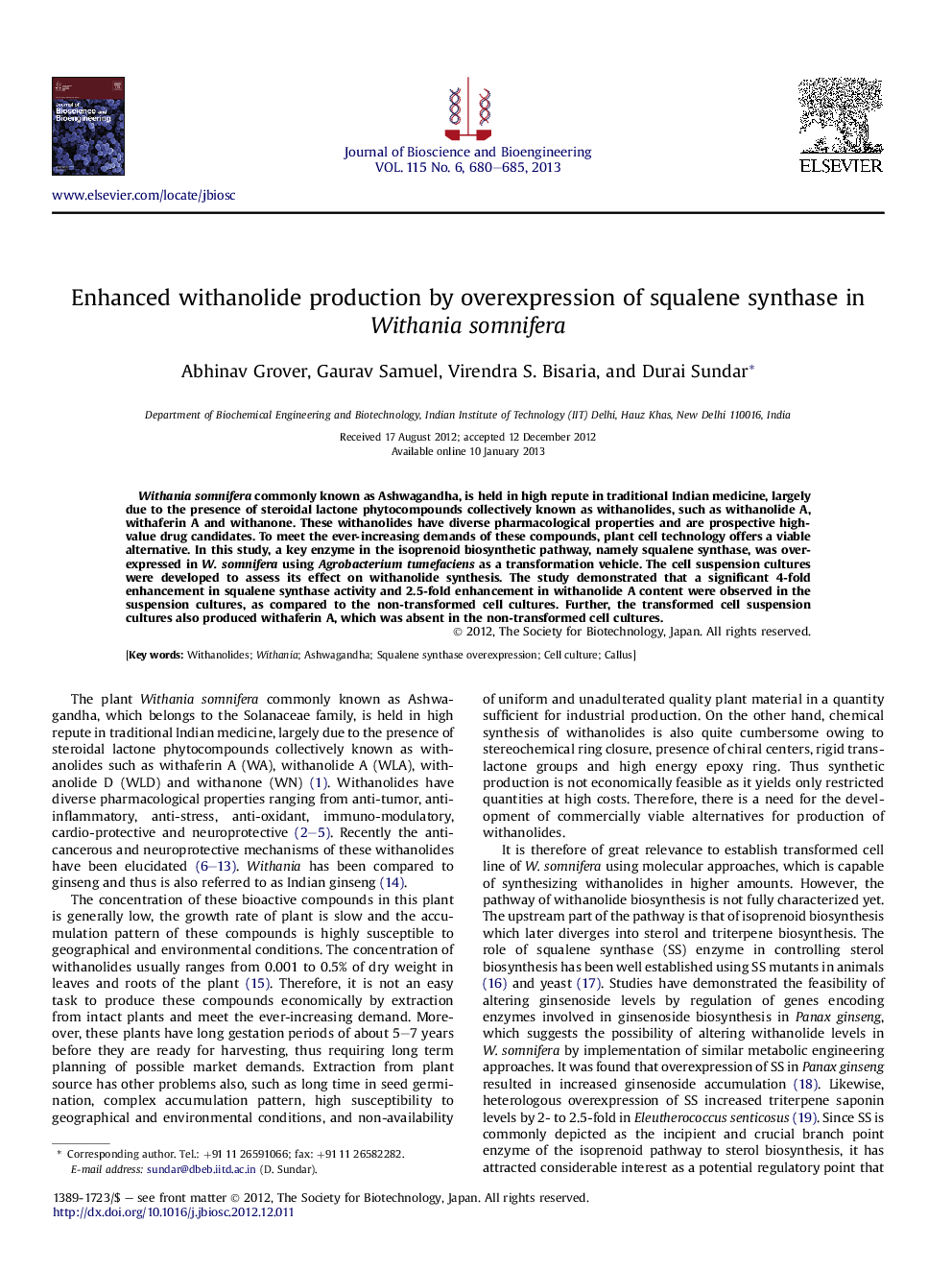| Article ID | Journal | Published Year | Pages | File Type |
|---|---|---|---|---|
| 20731 | Journal of Bioscience and Bioengineering | 2013 | 6 Pages |
Withania somnifera commonly known as Ashwagandha, is held in high repute in traditional Indian medicine, largely due to the presence of steroidal lactone phytocompounds collectively known as withanolides, such as withanolide A, withaferin A and withanone. These withanolides have diverse pharmacological properties and are prospective high-value drug candidates. To meet the ever-increasing demands of these compounds, plant cell technology offers a viable alternative. In this study, a key enzyme in the isoprenoid biosynthetic pathway, namely squalene synthase, was over-expressed in W. somnifera using Agrobacterium tumefaciens as a transformation vehicle. The cell suspension cultures were developed to assess its effect on withanolide synthesis. The study demonstrated that a significant 4-fold enhancement in squalene synthase activity and 2.5-fold enhancement in withanolide A content were observed in the suspension cultures, as compared to the non-transformed cell cultures. Further, the transformed cell suspension cultures also produced withaferin A, which was absent in the non-transformed cell cultures.
